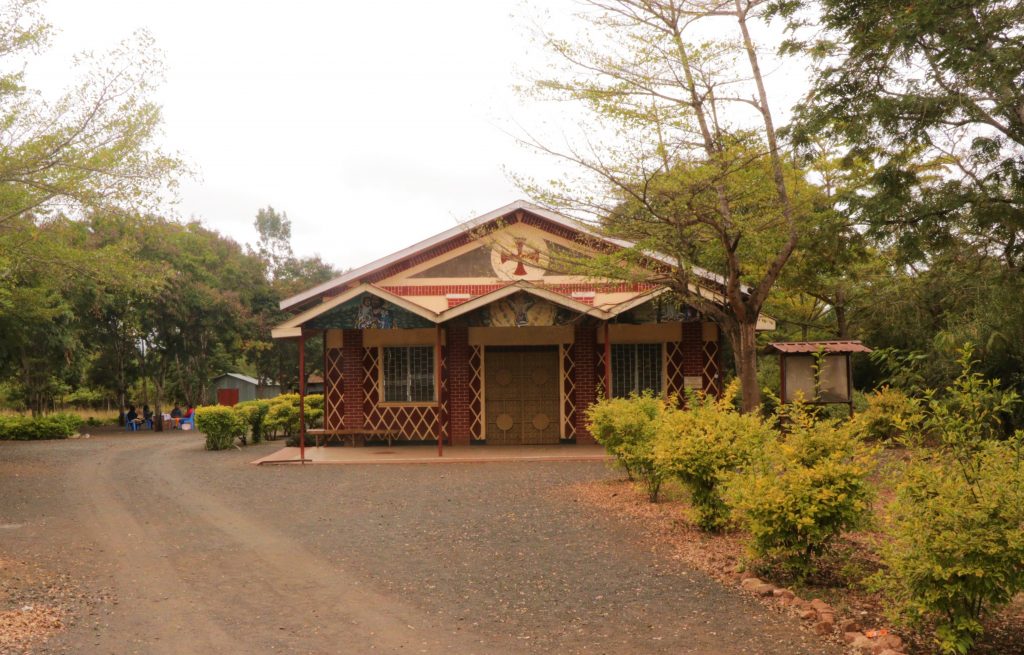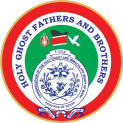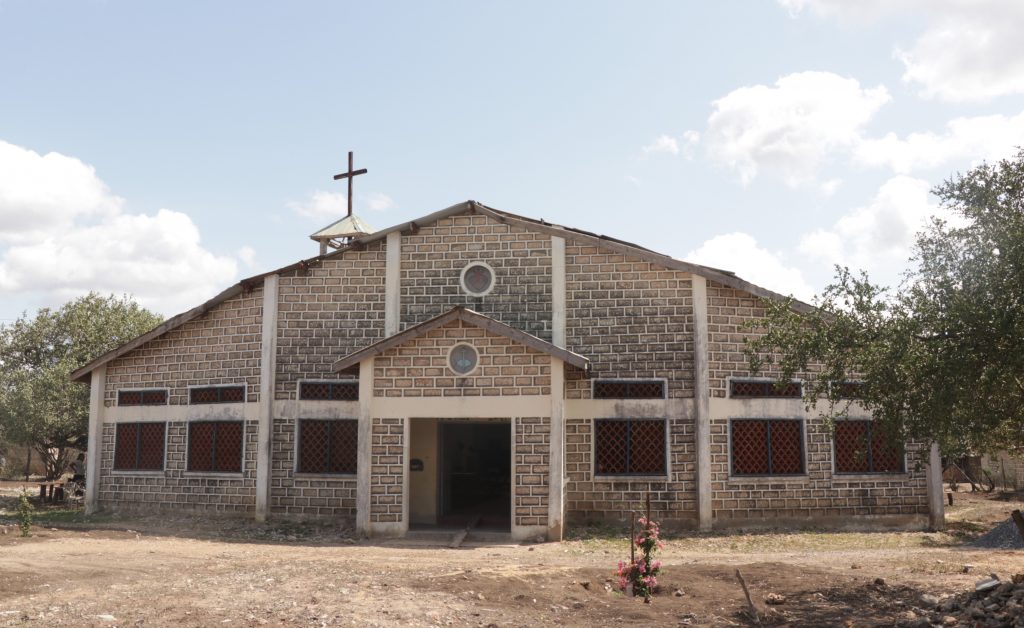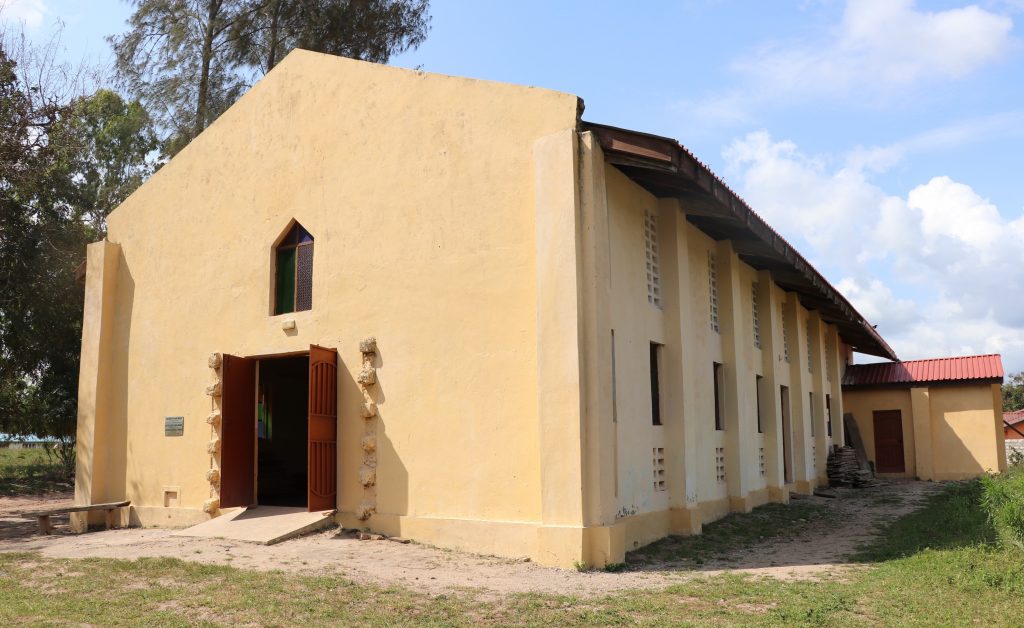
PASTORAL CARE

Since arriving in Kenya, Holy Ghost Fathers have been able to start a number of Parishes across the Province of Kenya and South Sudan. We aim to proclaim the gospel to people who have not yet heard it, foster the growth of young Christian communities. We achieve this through nurturing of spiritual growth and promotion of positive values, psychosocial aid to families, religious education, sacramental animation, training of formators, leadership formation and animation, ecumenical and interreligious dialogue and peace building.
St. Austin Catholic Parish, located in Muthangari, on James Gichuru Road, was founded by a small group of Holy Ghost Fathers and Brothers (the Spiritans) in 1899. They were the first Catholic missionaries in East Africa, arriving in Zanzibar in 1860, and quickly moving to the mainland Tanzania to Bagamoyo, north of Dar es Salaam. This was the transit point for slave trade from the African mainland to the markets of Zanzibar. The first missionaries addressed slave trade by accepting liberated slaves from naval ships and using their meager resources to redeem slaves from the markets in Zanzibar. They formed these unfortunate victims of exploitation into self-supporting Christian villages (called Liberty Villages) centered on the Church. Generally their local environment was seen as hostile, which united them more into cohesive groups.
The origin of the communities set up by the Church was not to emphasize individual conversions, but the formation of believing communities centered around the Church. The communities were extraordinarily industrious and originated the coffee industry in Kenya among other ventures. The assumption of the model was that these communities would attract many indigenous converts in the surrounding areas. But this proved not to be the case. The Christian villages were seen by the locals as alien, and the villagers saw themselves as alien. They did not integrate with the locals (in the case of St. Austin’s – the Kikuyu). Their origins as slaves proved a barrier to respect and integration. Very soon the strategy of the Liberty Villages was abandoned. The strategy of St. Austin’s and its daughter parishes changed to direct attempts to form communities of indigenous people gathered around the parish church. Progress was very slow in the first fifty years. The major growth started in the 1950s, coinciding with the movement towards independence in Kenya.
The village life was centered on worship and work shared in common. The villagers were encouraged to intermarry and so the villages grew. As they grew they needed to expand. The missionaries used the model of the beehive subdividing, or the notion of nurseries for transplanting. Thus the villages multiplied to Mhonda, to Morogoro in Tanzania and then across the border to Kenya: to Bura in Taita Hills and then in 1899 to St. Austin’s. This was the start of our Parish, and the start of the Catholic Church in Kenya!
A century later, the target people for missionary influence and expansion may have changed, but many of the elements of the original strategy continue to the present day. READ MORE….
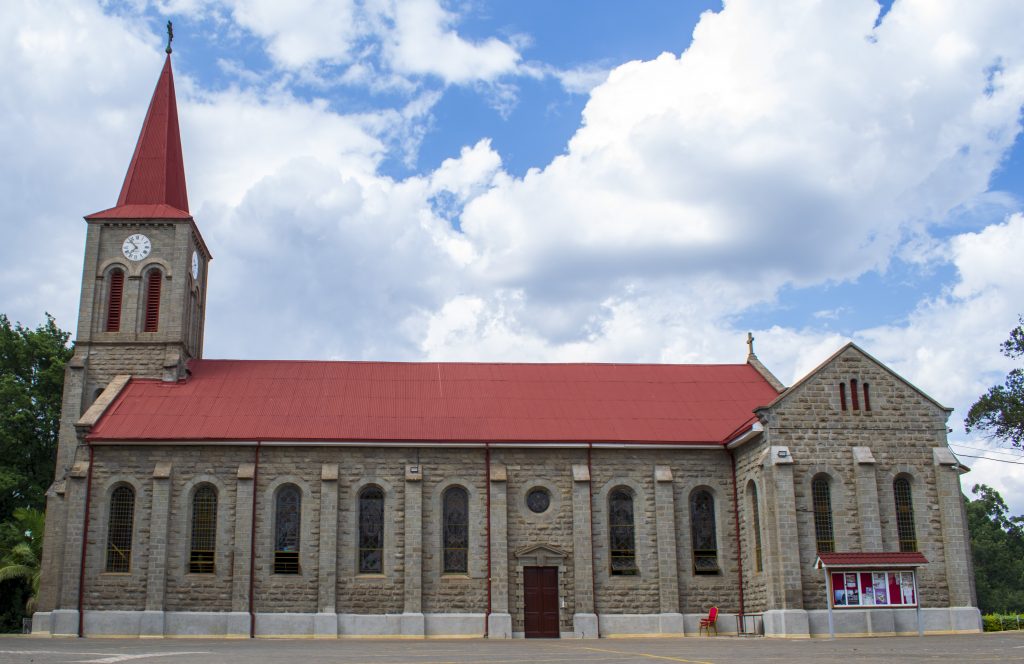
Immaculate Heart of Mary Migombani Catholic Church is situated in Likoni area. It is about a kilometre from Likoni Ferry or two kilometres from our house in Shelly Beach. The founding of Migombani is a culmination of the series of talks and negotiations that took place between the late Archbishop Boniface Lele and the superior of the Holy Ghost Fathers in Kenya, Fr Martin Keane. After receiving the go ahead from the Archbishop the Holy Ghost community under Fr Martin purchased a piece of land where the new parish was to be constructed. The first church building which was just four walls and a thatched roof was constructed in a hurry to cater for the pastoral needs of the parishioners. On the 27th may 2007 the first mass was celebrated in the new church building with pomp and jubilation. It marked a return of the spiritans to Mombasa.
The following year, 2008, the then Archbishop of Mombasa laid a foundation stone for the new church building. The same year the construction of the Immaculate Heart of Mary nursery school kicked off. In 2009, the construction of the Holy Ghost Fathers’ Technical institute was launched by our donors from Ireland who laid the cornerstone in a very colourful celebration. There was a lot of construction work taking place simultaneously.
Something though was noticeably missing in Migombani, and that is the fathers’ residence. The priests who are currently serving in Migombani, and those who came before them, are residing at St Brendans. The construction of the fathers’ house was started last year 2014. At the moment we are financially constrained with regards to this project and we are asking all our well-wishers to assist us to complete the building.

St. Marys’ Catholic Church – Kwa Njenga was had its humble beginnings in the late 1986 with a group of four Catholic families that started holding prayers in their houses. This group was led by Mr. Robert Mironga. In 1987 the number of families increased drastically and thus the idea of having Sunday Mass was considered.
With a growing Catholic population the Sunday Mass program was started by Fr. Alex a Comboni Missionary. The Masses were celebrated in two classroom halls.
After two months of the Sunday masses the Christians felt the need to start small Christian communities. Later on Fr. CHRISTOPHER BHATT a Spiritan was sent to minister in the slums. His first major project was to build a Church. When it was completed, the he invited the servant of God Cardinal MICHAEL MAURICE OTUNGA to consecrate the church.
In 1990 Fr. Patrick O’toole C.S.Sp in 1990 a Holy Ghost missionary was appointed to the Parish. Fr. PATRICK started his Mission by establishing clear boundaries for the Parish. These parish boundaries cover Lunga Lunga road, Enterprise road, Mombasa road, North Airport road, Outering road then Donholm. Later on Fr. PATRICK acquired a piece of land at Reuben where he put up the third church. At the same time a church was constructed at Sinai. He wanted a church in Pipeline whereby a group of people went to pipeline hall for Sunday Masses for some time.
CURRENTLY
ABOUT US
St. Mary’s Catholic Parish Mukuru serves the Catholic Christians of Mukuru’s informal Settlements. It was started in the year 1994 by Holy Ghost Fathers (Spiritans). The Parish geographically ranges from Mukuru Sinai Slums, Lunga Lunga industrial area, Mukuru Kwa-Reuben, AA areas-Mukuru North, Pipeline Areas, and Mukuru Kwa-Njenga.
St. Mary’s Catholic Parish-Mukuru has 5 other outstations that include:
St. Bakhita –Mukuru North
Holy Spirit –Pipeline
St. Jude Thaddeus- Reuben
St. Monica -Lunga Lunga
St. Joseph’s-Sinai
The Parish Center is St. Mary’s Catholic Church-Kwanjenga.
The Parish Offices are located at St. Mary’s Catholic Church and St. Bakhita Catholic Church-Mukuru North.
The Leadership
St. Mary’s Catholic Parish Mukuru is led by the Parish Priest, Fr John Munjuri CSSp, his Assistant, Fr Leonard Ndambuki, and the parish Executives committee members elected from the six outstations.
Parish Mission Statement
St. Mary’s Catholic Parish Mukuru is a diverse and welcoming Catholic community giving witness to Jesus Christ through love, worship, faith formation, and service. We fulfill our mission by living the Gospel through word, action, and evangelization within and beyond our community.
Parish Pastoral Council
The pastoral council consists of the Clergy, the catechists, five other elected Local church leaders and groups’ leaders drawn across the six centers.
Liturgical Team
Consists of the clergy and Six Catechists drawn from all the six centers.
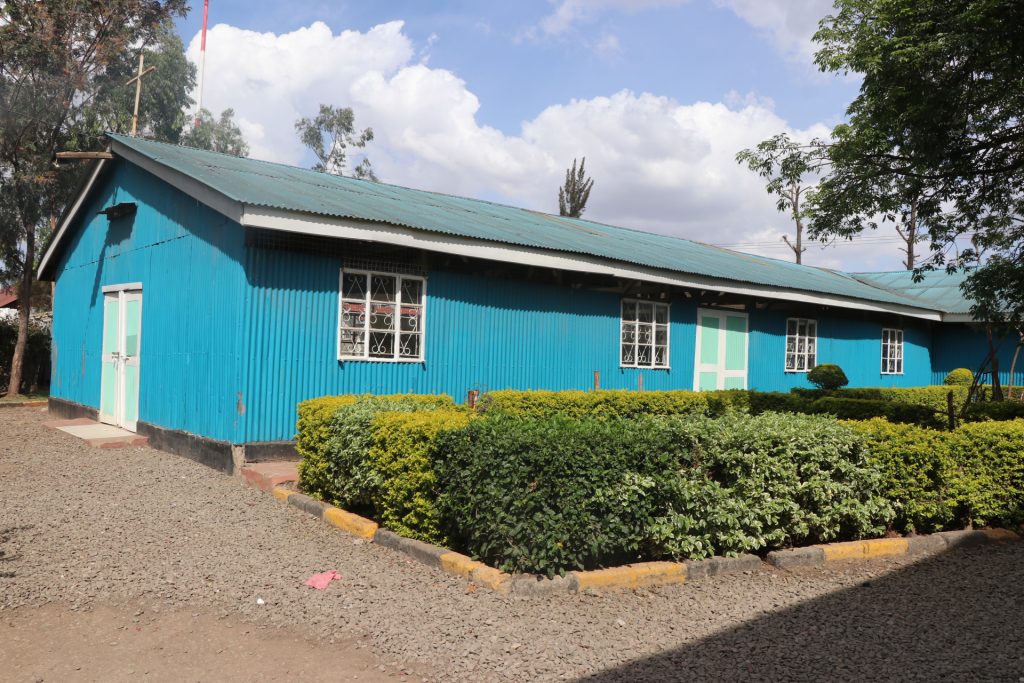
The idea of starting St John the Evangelist parish came from the late His Eminence Maurice Cardinal Otunga, then archbishop of Nairobi, in 1989 when he asked the Congregation of the Holy Ghost (Spiritans) to start the parish and administer it.
The parish didn’t start to function immediately- in the meantime Christians living around attended Mass on Sundays at various chapels in Religious communities, mainly at Spiritan House, Francican Capuchins on Bogani road, the Shrine of the Apostles of Jesus on Langata road and at the Passionists on Ushirika road.Those who worshiped at the Spiritan House chapel and knew of the plans of a new parish took the initiative to get the Christians together to start the parish.
In 1995 an interim Parish pastoral council was formed with the blessing of the Cardinal (Otunga) who asked the Father-in-charge of Karen parish to be attending the initial meetings of the committee so as to give direction and guidance.
The Spiritans at the seminary graciously allowed the use of their library as the meeting venue on Sundays.
The committee realized the need to start fundraising for the building of the parish. They held mini Harambee fundraising meetings at the end of every month in the four centres mentioned above.
At the end of every three months, the parishioners would have a combined fundraiser in each of the four centers in rotational basis where external guests were also invited.
The first major fundraiser was held at Spiritan House in April, 1996. The Spiritans were represented by an official from their Provincial headquarters in Arusha, Tanzania.
The long term plan was envisaged as follows:
1. Acquire a plot on which to develop the parish,
2. Take care of the spiritual and sacramental needs of the parishioners,
3. Build a church,
4. Build a Fathers’ house,
5. Build a community centre.
In June 1996, Fr Simon Lobon was appointed as the first Father- in- charge of the parish.READ MORE……
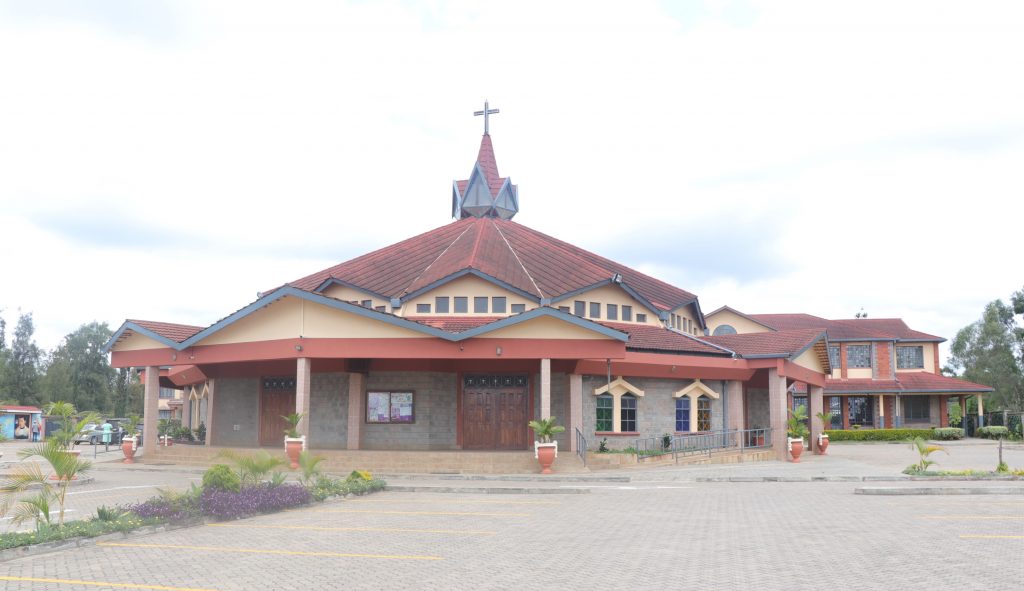
St. Charles Lwanga Parish is in the Archdiocese of Nairobi in Kenya. It is a rural catholic Parish situated in a partly semi-arid area, about forty kilometers north of Nairobi the capital city. The Parish is a relatively young comparing with the big parishes opened by the missionaries many years ago. Opened in 1995 and with one part being semi-arid, the population is a mixture of strong protestant churches from Presbyterian, Methodist, and African Independent church. St. Charles Lwanga has 1,660 baptized Catholics, and although many are permanently settled, they are struggling to meet their daily needs. The Parish has three out stations and they are separated by long distance and cover an expansive geographical area. The inhabitants are poor people who rely on subsistence farming and those at the peripheral of the parish rely on keeping a few livestock. They are not able to cater fully even for their needs, they struggle and many keep on asking for help from the church.

Kilimambogo Catholic Mission is in the Arch-Diocese of Nairobi. It was begun by Irish missionaries of the Congregation of the Holy Ghost Fathers of the District of Kenya. For over 80 year, Holy Ghost Fathers – The Spiritans, have being taking care of the mission (administration / apostolate). Currently, Fr. John Kamangara CSSp the priest in Charge assisted by Fr. Aurelian Masawe Tumaini CSSp (2013).
It is the last Parish on the Eastern end of the Arch-diocese (Thika Deanery) bordering Machakos diocese in the East and Murang’a Diocese on the Northern side. The parish has four outstations namely, Immaculate Conception – Kilimambogo, St. Joseph the Worker – Ndula, St. Luke’s – Magogoni and Christ the King – Ngoliba Church. The parish has a population of approximately 3,000 parishioners. There are 24 Small Christian Communities. The following apostolic groups are active in the parish; CMA (Catholic Men Association), CWA (Catholic Women Association), Youth, PMC (Pontifical Missionary childhood), Legio of Maria, Sacred Heart, choir and Pioneer. There are two Self- Help groups in the parish namely, St. John Self – Help Group- Kilimambogo and St. Luke’s Self – Help group – Magogoni.
Kilimambogo Teachers Training College shares the same compound with the Parish house and the main Parish center. In January 1925 father Michael Witte, a Holy Ghost Father from Holland opened a Teacher Training School in Kabaa. He named it “St. John’s Teachers College”In 1946it was decided to move the college from Kabaa to Lioki – near Kiambu township. However, it was then decided that the compound in Lioki was too small for further development and therefore, the college was moved to Kilimambogo. At the same time the Diocesan Seminary was started on the compound by the Holy Ghost Fathers. The college was later taken over by the government and the current senior principal is called Mr. James M. Wachaga and the college chaplain is Fr. Mike McMahon CSSp (2013)
Other neighbors in the somecomplex are the Immaculate Heart of Mary Hospital; which is currently administered by Immaculate Heart of Mary sisters. This hospital was originally started by the sisters of the Holy Rosary. They also founded Kianjahi Primary school which is now a government school. There is alsoKilimambogo Primary School which was started by the Holy Ghost Missionaries. It is now a government school. There is also a house of formation for the Spiritans, Postulancy where young men from all over the country spend about a year discerning their vocation. The present director of the postulants is Fr. Mike McMahon CSSp assisted by Fr. Fredrick Musunji CSSp who is also the Vocations Director of the Holy Ghost Fathers.
In the same compound there is an old Church building which is a historical landmark of the background of the spread of the Catholic faith in this region (an outstation of St. Peters Claver’s Parish in Nairobi). History is written that the church was built in 1926 by a Holy Ghost Polish Brother called Br.JosephatNovitzki. On the 27th of March 1926, Palm Sunday, “a crowd which could be about a thousand, assembled at nine in the morning near the new church constructed these three months on the bank of the Athi River” (HGM, Spiritans in Nairobi 1899-1999, CothraiGoganCSSp, pg 62). He continues to quotefrom amission journal that, Fr. Blais, delegated by Bishop Neville, proceeded to the solemn blessing of the church dedicated to the Immaculate Conception. Fr. Michael Witte, a Holy Ghost missionary From Holland, while giving a homily during that mass make a comparison between the Christians and the new Church, “Formerly the stones which have served to construct this church were rough and soiled, till set one on top of another, and so we have today a dwelling to come to and pray to God in and have Him dwell in our midst. Similarly, the Christians here present were formerly living in paganism, with a soul soiled by sin, and then came the missionaries who inserted them into the church. As the stones hold themselves up to become a house of God, so Christians remain firm in their faith, free from sin, to be also dwelling for God by Grace”(Ibid)
In his book Fr. Gogan quotes that, this new project… It is intended that the new mission would be the centre for all the schools, seventeen in number, from Ruiru to DonyoSabuk. In April 1926, there were 405 Christians and 620 catechumens. May Mary Immaculate, Patroness of the new church, take under her very special protection the project dedicated to her.
In 26thOctober the council of the Vicariate judged it useful to establish the mission of KilimaMbogo joined to that of Kalimoni, where Br. Josephat was finishing the construction of the new Church and appointed Fr. Blais as the first father in charge.
As years went by the church become too small to accommodate the growing number of Christians and students at the College and therefore, a new church was build in 1963. It was opened and blessed by Archbishop John McCarthy, of Nairobi, who had provided the funds towards the building.
Presently, there is harmonious relationship between the college, staffs and students with the parish community. The YCS (Young Christian Student) in the college play an active part in the work of the mission; they participate actively in the liturgy and catechetical work among the young people.
Compiled by
Fr. John Kamangara CSSp
Father in charge

Marigat Mission was created in 1978. It was curved out of St. Joseph the work Kituro in Baringo south. It was served then by Mill hill fathers then was handed over to the St Patrick fathers and ten years later the Holy Ghost fathers were charged with the care of souls till then to present day with 2,357 registered baptisms. This Parish was created at the time when the political regime tried all what was possible to erase the Catholic faith in this area. This meant that most of the people who even wished to join the Catholic Church feared that they were to be side lined from political favours. Others were enticed with other material things like scholarships, employment and lands.

The last of the missions to be established in East Pokot has been Rotu. The first tentative steps in this vast area took place in 1998 when Sean Mc Govern and Sr. Rebecca came up with the East Pokot medical project to care for the people in Akoret. We would camp there for 3 days at a time. This continued for some years till it became clear from the many needs of the people that a more permanent base was needed.
In 2002 Sr. Rebecca Janacek, who had been in the East Pokot medical project since 1987, with Fr. David Conway put up 3 pre-fabricated wooden houses in Rotu as a first step towards establishing a more permanent presence among these next neglected people. The fact that this area is the most northerly part of Nakuru Diocese and borders Turkana, makes it extremely vulnerable to attacks from Turkana rustlers. Many people have been killed in such encounters.
Over the next few years an amazing amount of development took place. The houses, a dining room and two bed rooms, have been used on regular occasions by Sr. Rebecca. She was stationed at Barpello during this time but came requently to Rotu for several days work.
One of the great achievements was the sinking of a bore hole at Rotu, and another at Chesawach. Both have perfect potable water. At Rotu this was essential for the people and for the permanent settlement of the mission.
By 2011 in November we were ready to begin living at Rotu on a permanent basis. Sean Mc Govern and Sr. Rebecca are both here now for almost 4 years. Further developments have taken place not least the establishment of the medical project with a very fine well equipped health unit. Also a great addition has been the construction of a sizable hostel for guests and indeed for any staff that may be employed in the medical or other projects. All of this to the great credit of Rebecca.
Since the permanent settlement of Rotu mission in 2011 there has been consistent Kanisa, Mass and instruction every Sunday from 10. AM – Noon. Attendance has been consistant at around 50. Over the past 4 years we have noticed that a small core of people is regular in attendance. 2 are wazee, 3 are women and 6 are school children of about 10 yrs of age. These 11 are preparing to receive the first stage of Baptism when the Bishop cames on pastoral visitation in October this year. They will be the first Catholics in this mission. When we arrived here in 2011 not one person could read or write. Now those 6 young students from standard 4 in Rotu School are very capable readers in the Church every Sunday. Much has been achieved. Much remains to be done.

The Mission is under the Catholic Diocese of Nakuru and was established in 1981 by the Holy Ghost Fathers. It is the 2nd Mission to be established in East Pokot and has 5 mass centres.

In 1987 two housing cooperative societies were formed. One had members of the teaching profession (Nakuru Teachers) and the other one had members from workers in general (Nakuru Workers). Nakuru teachers Housing Society and Nakuru Workers Society bought hundreds of acres of land then subdivided the land to its members. In fact that was the main reason the members of both teachers and workers societies bought the land so that they could get a plot of ¼ or 1/8 of an acre to build their own home. Before that majority of teachers and workers in general were living in rental houses down town which were owned by the Nakuru Municipality or by individuals. The houses were small and still expensive to rent. So joining the Nakuru Teachers and Workers Societies helped the teachers and workers to own a piece of land and start constructing their own houses.
In 1999 the people around here build a small church where the priest would come from the nearby parish to offer spiritual services. More houses for rentals were also built here and the population increased. The need for a bigger church arose. Many fundraisers were held to collect money from Christians for this work. The church was built in stages, foundation, main structure, roofing, and plastering. In 2012 St. Francis Kiti was made a Parish with a residential priest.
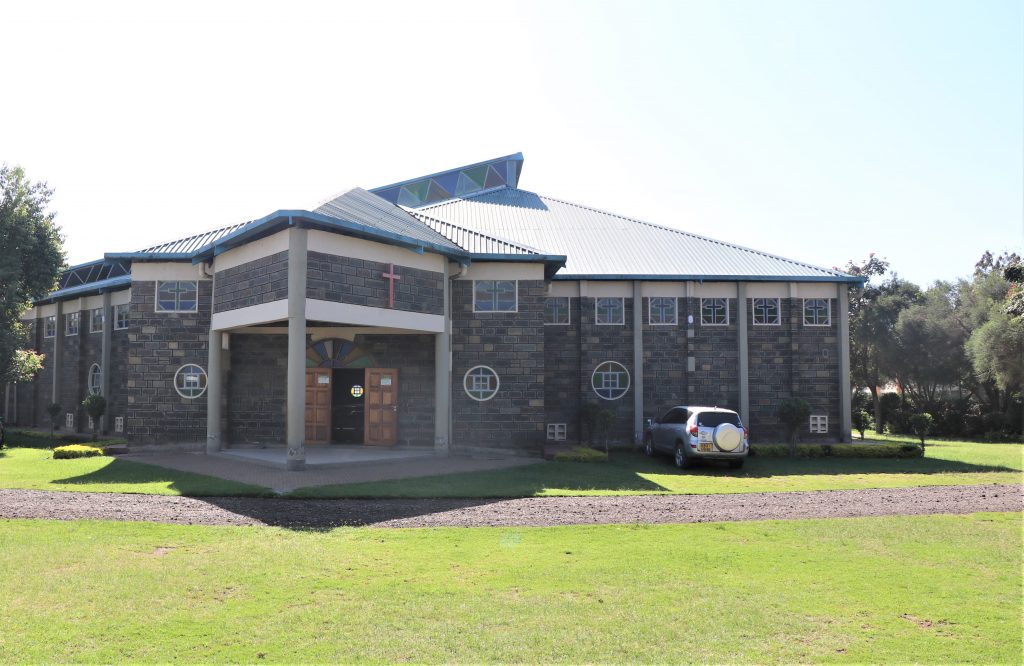
Katheka Parish is under the custody of the Holy Ghost Fathers in Machakos County. It was started in the year 2005 and was curved from Masii parish. Katheka Parish is located in Mwala Sub-county, Machakos County, Kenya. The parish lies near the Highway of Machakos-Kitui at Masii 6 kms from the highway.
Katheka is a populated place in Eastern, Kenya, Africa. The local climate is semi-arid with a hilly terrain covering most parts of the county. Subsistence agriculture is practiced with Coffee, Maize and drought-resistant crops such as sorghum and millet being grown. People who live here are mostly of the Akamba ethnicity. Being a semi-arid region in Kenya it is prone to frequent droughts, water shortages and food insecurity. Rapid population growth, coupled with climate change, has led to not only an increasing demand for more land, but also to over-exploitation and degradation of local natural resources, leading to a myriad of socio-economic and environmental challenges in the area.
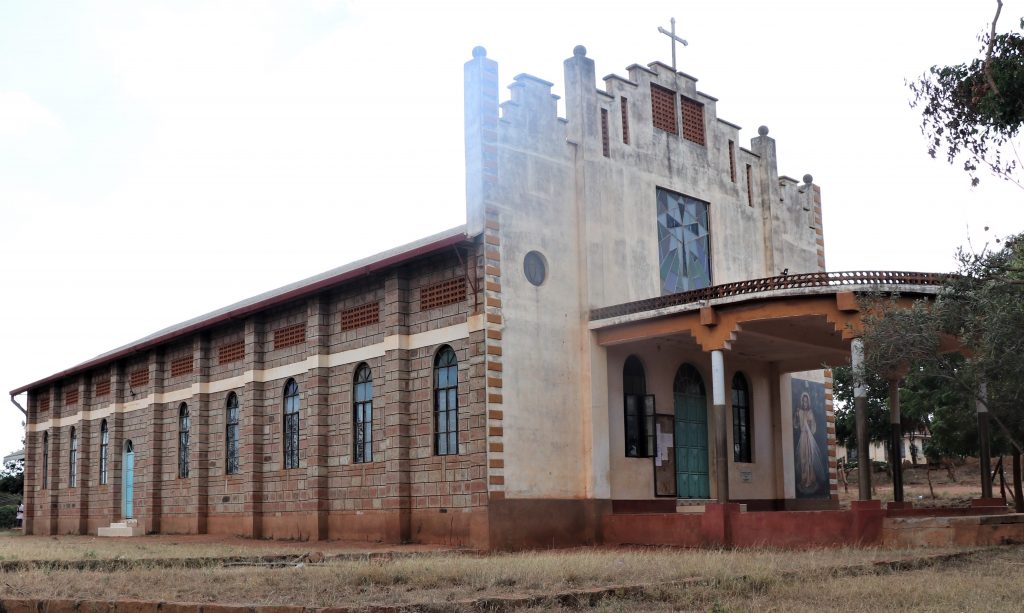
Wenje Parish was established in the year 2005 and is located in Kinakomba Ward, Galole Sub-County of Tana River County. This parish covers two (2) Sub-Counties; Ijara in Garissa County and Galole in Tana River County . Wenje as a parish is under the Diocese of Garissa.
The region is Semi-Arid part of Tana River County. The area is between 70– 100m above sea level. Slopes are within the range of 0.05%-0.15% with local surface undulations. The County has a total area of 35,375.8 KM2 (13,658.7 sq. miles) and is subdivided into three Sub-Counties namely: Bura, Galole and Garsen with a total area of 35,375.8 KM2 (13,658.7 sq. miles) Galole Sub-County has four Wards of Wayu, Chewani, Mikinduni and Kinakomba. Trust land forms over 90% of the County’s land (CIDP 2018-2022).
Wenje Parish is 556.9 square KM with five administrative Locations which are Gwano, Jamhuri, Kinakomba, Ndura and Mazuni and 11 sub locations. It has a population of about 18,000 people (3908 HH) which is about 7% of the total population of the whole County. The Parish as a whole falls within the Coast low land climatic Zone CL3, CL4 and CL5. These zones are in a Semi-Arid area characterized by scarce rainfall ranging between 300m – 600mm per annum only (CIDP 2018-2022). Rainfall is erratic and unreliable resulting in persistent moisture stress in the soil profile and immanent, persistent and prolonged droughts every second year. It is characterized by a flood plain along the banks of River Tana which is prone to flooding whenever the river bursts its banks and from seasonal rivers in the hinterland. The soils range from sandy, dark clay and sandy loam to alluvial deposits. The soils are deep around the riverine environments but highly susceptible to erosion by water and wind. While soils in the hinterlands are shallow and have undergone seasons of trampling by livestock, thus are easily eroded during rainy seasons (CIDP 2018-2022). The vegetation ranges from scrubland to thorny thickets within the riverine area. From wood-head maps, the average evapo-transpiration during the dry and sunny months with a crop factor of 0.9, is 5.2mm/day (CIDP 2018-2022). Average annual temperatures are about 300C with the highest being 410C around January-March and the lowest being 20.60C around June-July with very high evaporation.

Tangulbei Mission was opened in 1991. Fr Michael Begley was the first one to live there permanently. In the previous years Gerry Foley and Sean Mc Govern had arranged with the local community for the allocation of a sizable plot of land on a hillside overlooking the then small village of Tilingwa. A mission house was constructed and very basic domestic utensils made ready for the starting the new mission. Sean O’leary arrived in Tangulbei in 1993 on a two year mission experience appointment. His arrival in Tangulbei clearly came as something of an eye opener to say the least. He described it as a ‘’vast, hot and dusty place where basic facilities like running water, electricity, public transport, shops, post-offices and telephones were clearly absent’’ Despite these initial surprises Sean did eventually settle down to be charmed by the place and the people and do Trojan work there.
From 1997-2013 Trangulbei was administered by Fr Paul Leyden. Through these years Paul got the medical programme running on a self –sustaining basis. There wasn’t great expansion but a sound foundation was laid for future positive development. In education Paul had the foresight and the courage to establish a private primary school on a very spacious plot some 3 kms from the town. Both those projects were inherited by Fr. Fred Wafula when he took over from Paul in 2012. Fr. Fred has brought the medical and education establishments in Tangulbei to a new level. A new fully equipped health unit has been constructed. Brother Sebastain from a congregation of Brothers founded by Fr. Witte CSSp. in Nyeri in the 1940s is new working in the medical project as its fully qualified “daktari” and administrator.
The school named St. Paul’s; in the recent primary school public examination had absolutely excellent results, the vast majority of their candidates qualifying for secondary education. After an understandably slow start, Tangulbei is flourishing.

After the Sudan Referendum in 2005, the Bishops conference of Sudan requested some of the Religious Congregations to open their missions in South Sudan, Spiritans being one of them. The General Council in Rome by then, mandated UCEAF to find the possibilities of founding Spiritan Mission in South Sudan. In the year 2009, Fr. Martin Keane, CSSp (the Superior of Kenya Founda tion by then), Fr. Joseph Shio, CSSp (Provincial Superior of the Province of Tanzania by then), and Fr. Vincent Waiga, CSSp (a representative from Uganda Foundation), visited some of the Dioceses in South Sudan with the view of opening Spiritan Missions. The Spiritans finally landed in the Diocese of Rumbek where they established a mission in Wulu which is 34 Kilometers from Rumbek town.
The first Spiritan to find himself in South Sudan for mission was Fr. Peter Kiarie (Kenyan) who arrived on 31st May 2012. In the same year, on 2nd November Fr. John Skinnarder (Irish) and Fr. Nolasco Mushi (Tanzanian) joined Fr Peter and so the three became the first confreres in the found ing of the mission in South Sudan. Later on, Fr. Boniface Isenge joined them. Currently, The Spiri tans work in three Missions in Rumbek Diocese: Wulu, Thon Aduel and Holy Cross

St. Joseph’s the Worker Sultan Hamud parish was officially opened on 11th May 2014, by Rev. Bishop Martin Kivuva. The parish ‘curved’ from Kasikeu parish n part of Kiongwani Parish both in the Diocese of Machakos. The parish centre is St. Joseph the Worker Church situated at Sultan Hamud town that is 100 kilometres from Nairobi along Nairobi-Mombasa Road.
The parish comprises of 10 outstations:- St. Peter n Paul Kalimbini, St. Jude kawese, St. Peter Lumu, St. Joseph Kandolo, St. Pius Kyunguni, St. Rita Makutano, St. Stephen Kilia, St. Paul Mutyambua, St. Peter Ikuyuni n Holy family Ngoto. The parish has a population of between 530-600 faithful. Served by three priests, Fr. Paul Kamau is the Parish Priest, Fr. John Mutisya assistant Parish Priest n Fr. John Wambu is the Principal Holy Ghost Sec. Schools. The priests are assisted in those outstations by 11 part time catechist
